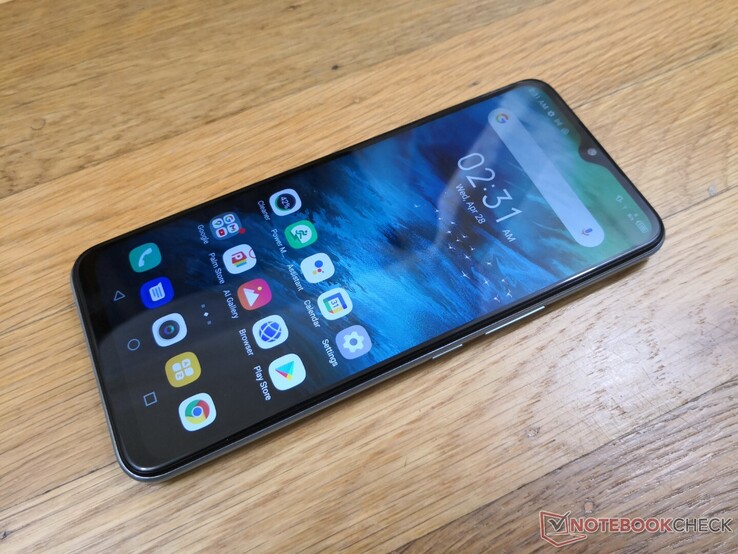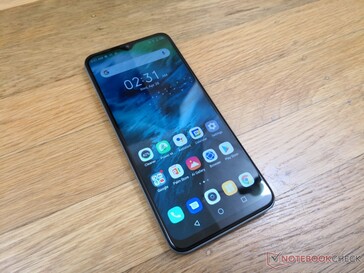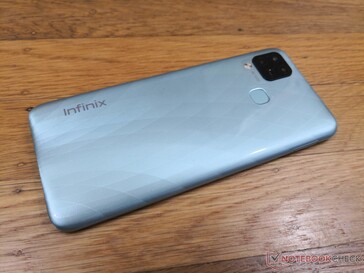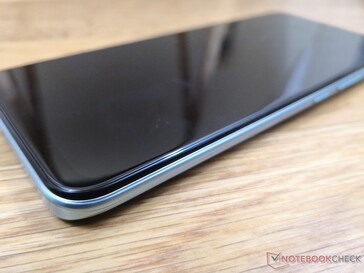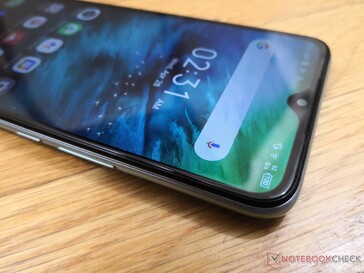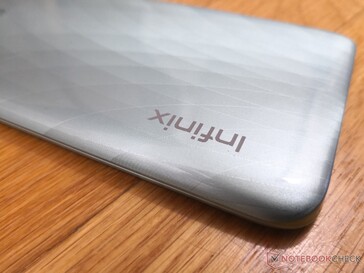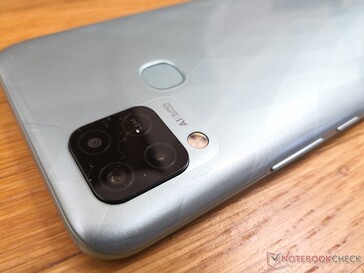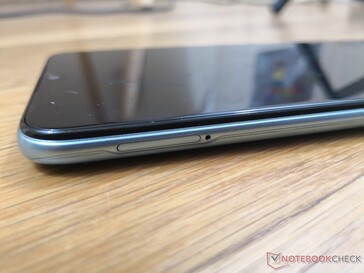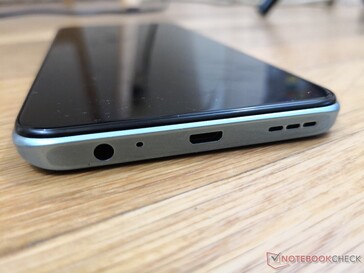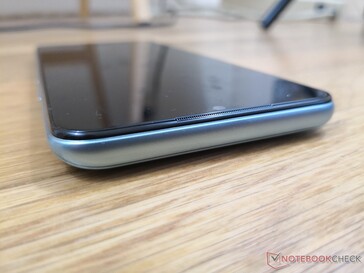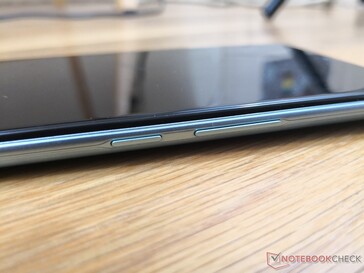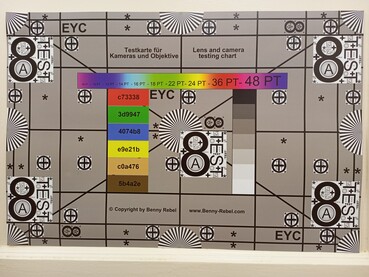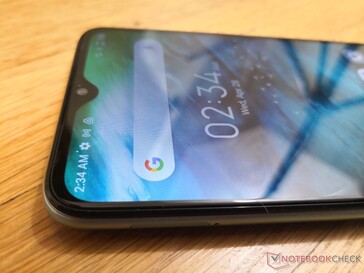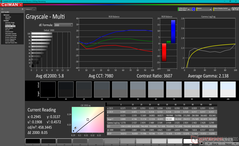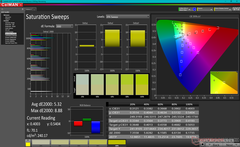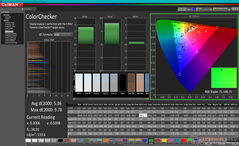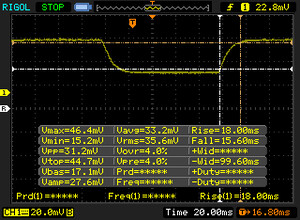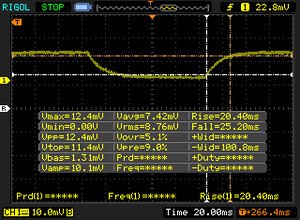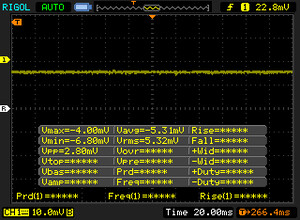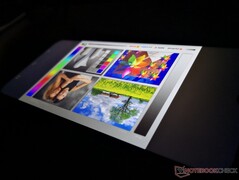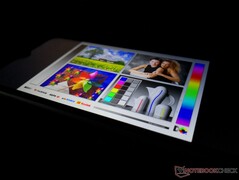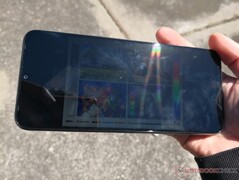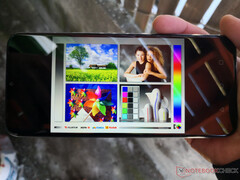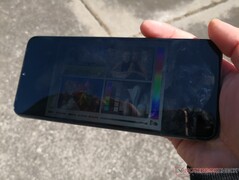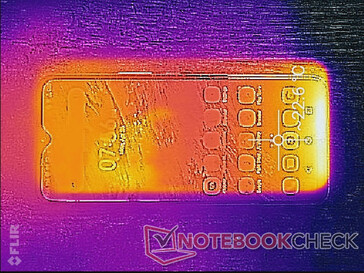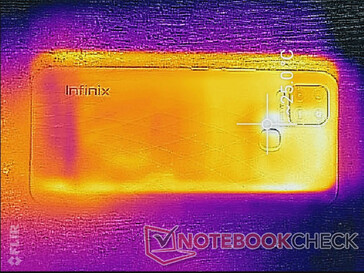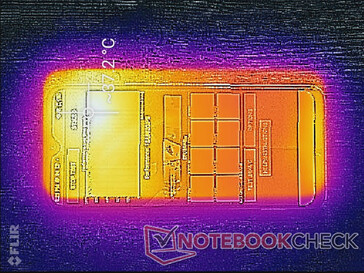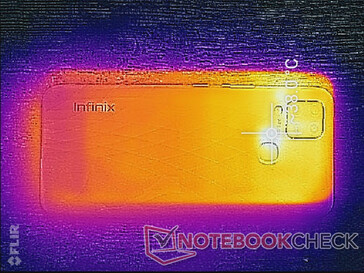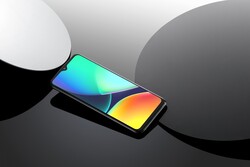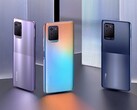Infinix Hot 10S NFC Smartphone Review: 90 Hz for $120 USD
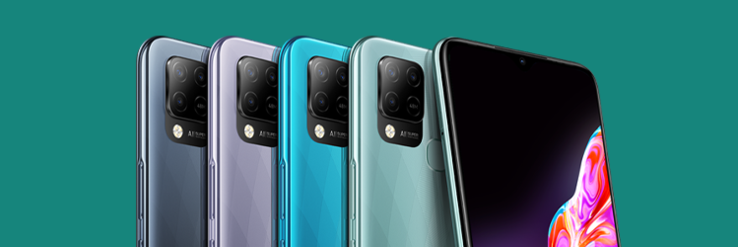
Officially unveiled just last week, the Hot 10S NFC is the latest inexpensive smartphone from Infinix designed for users who want a large display without having to spend hundreds of dollars more. The smartphone is also notable for carrying a MediaTek Helios G85 SoC, a 90 Hz refresh rate display, triple 48 MP rear cameras, and a large 5000 mAh battery — not bad for something retailing for just $120 USD.
A second version called the Hot 10S will also be made available on May 12 with more RAM (6 GB vs. 4 GB) and an even larger battery (6000 mAh vs. 5000 mAh) for $130 USD. Both versions are planned for Indonesia, Russia, and Latin America in Black, Green, Ocean, and Purple color options.
potential competitors in comparison
Rating | Date | Model | Weight | Height | Size | Resolution | Best Price |
|---|---|---|---|---|---|---|---|
| 76 % | 04/2021 | Infinix Hot 10S Helio G85, Mali-G52 MP2 | 200 g | 9.2 mm | 6.82" | 720x1640 | |
| 83 % | 04/2021 | Samsung Galaxy A52 5G SD 750G 5G, Adreno 619 | 189 g | 8.4 mm | 6.50" | 2400x1080 | |
| 71.3 % | 04/2021 | Doogee X95 Pro Helio A20 MT6761D, PowerVR GE8300 | 177 g | 8.4 mm | 6.52" | 1600x720 | |
| 82.2 % | 04/2021 | Realme 8 Pro SD 720G, Adreno 618 | 176 g | 8 mm | 6.40" | 2400x1080 | |
| 87.2 % | 04/2021 | OnePlus 9 SD 888 5G, Adreno 660 | 192 g | 8.7 mm | 6.55" | 2400x1080 | |
| 77.6 % | 04/2021 | Motorola Moto G30 SD 662, Adreno 610 | 197 g | 9 mm | 6.50" | 1600x720 |
Case
The first thing users will notice is how large the Hot 10S is. Consequently, it's also slightly heavier and larger than many alternatives including the Samsung Galaxy A52 or Doogee X95 Pro. Build quality is otherwise nothing special with its glossy plastic back and rounded edges and corners. Our specific test unit exhibits no faulty construction or unintended gaps along the sides.
Connectivity
Communication
| Networking | |
| iperf3 transmit AX12 | |
| OnePlus 9 | |
| Doogee X95 Pro | |
| Infinix Hot 10S | |
| Realme 8 Pro | |
| Samsung Galaxy A52 5G | |
| Motorola Moto G30 | |
| iperf3 receive AX12 | |
| OnePlus 9 | |
| Infinix Hot 10S | |
| Doogee X95 Pro | |
| Samsung Galaxy A52 5G | |
| Realme 8 Pro | |
| Motorola Moto G30 | |
Rear Camera
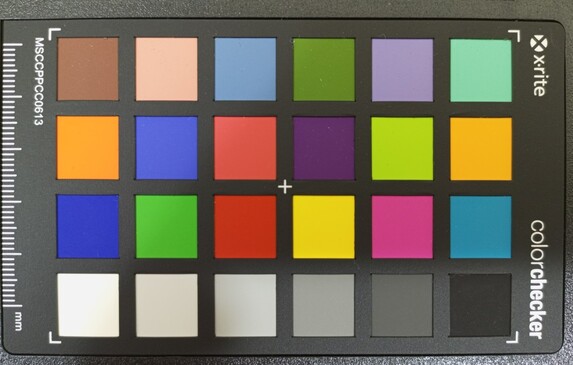
Display
The IPS display excels in a few aspects while falling behind in others. Contrast ratio, for example, is high for excellent black levels when viewing videos and the fast 90 Hz refresh rate makes the display more responsive to the touch. On the other hand, black-white and gray-gray response times are slow meaning ghosting is noticeable when scrolling through web pages.
| |||||||||||||||||||||||||
Brightness Distribution: 95 %
Center on Battery: 459.8 cd/m²
Contrast: 2705:1 (Black: 0.17 cd/m²)
ΔE Color 5.36 | 0.5-29.43 Ø5
ΔE Greyscale 5.8 | 0.57-98 Ø5.3
Gamma: 2.14
| Infinix Hot 10S 6.82, 720x1640 | Samsung Galaxy A52 5G Super AMOLED, 6.50, 2400x1080 | Doogee X95 Pro IPS, 6.52, 1600x720 | Realme 8 Pro AMOLED, 6.40, 2400x1080 | OnePlus 9 AMOLED, 6.55, 2400x1080 | Motorola Moto G30 LCD IPS, 6.50, 1600x720 | |
|---|---|---|---|---|---|---|
| Response Times | 93% | -30% | 82% | 69% | -40% | |
| Response Time Grey 50% / Grey 80% * | 45.6 ? | 3.2 ? 93% | 63.2 ? -39% | 8 ? 82% | 20 ? 56% | 76 ? -67% |
| Response Time Black / White * | 33.6 ? | 2.4 ? 93% | 40.4 ? -20% | 6 ? 82% | 6 ? 82% | 38 ? -13% |
| PWM Frequency | 250 ? | 114.7 | 323.6 | 176.7 ? | ||
| Screen | 47% | 0% | 17% | 64% | -16% | |
| Brightness middle | 459.8 | 744 62% | 382.2 -17% | 581 26% | 731 59% | 284 -38% |
| Brightness | 456 | 749 64% | 357 -22% | 563 23% | 739 62% | 263 -42% |
| Brightness Distribution | 95 | 98 3% | 86 -9% | 86 -9% | 96 1% | 83 -13% |
| Black Level * | 0.17 | 0.18 -6% | 0.34 -100% | |||
| Contrast | 2705 | 2123 -22% | 835 -69% | |||
| Colorchecker dE 2000 * | 5.36 | 2.2 59% | 4.4 18% | 4.34 19% | 0.59 89% | 2.92 46% |
| Colorchecker dE 2000 max. * | 9.78 | 7 28% | 8.12 17% | 7.15 27% | 1.3 87% | 5.06 48% |
| Greyscale dE 2000 * | 5.8 | 2.1 64% | 3.4 41% | 4.9 16% | 0.9 84% | 3.6 38% |
| Gamma | 2.14 103% | 2.06 107% | 2.03 108% | 2.327 95% | 2.243 98% | 2.307 95% |
| CCT | 7980 81% | 6516 100% | 6963 93% | 7658 85% | 6573 99% | 6780 96% |
| Total Average (Program / Settings) | 70% /
58% | -15% /
-6% | 50% /
33% | 67% /
65% | -28% /
-21% |
* ... smaller is better
Display Response Times
| ↔ Response Time Black to White | ||
|---|---|---|
| 33.6 ms ... rise ↗ and fall ↘ combined | ↗ 18 ms rise | |
| ↘ 15.6 ms fall | ||
| The screen shows slow response rates in our tests and will be unsatisfactory for gamers. In comparison, all tested devices range from 0.1 (minimum) to 240 (maximum) ms. » 89 % of all devices are better. This means that the measured response time is worse than the average of all tested devices (21.5 ms). | ||
| ↔ Response Time 50% Grey to 80% Grey | ||
| 45.6 ms ... rise ↗ and fall ↘ combined | ↗ 20.4 ms rise | |
| ↘ 25.2 ms fall | ||
| The screen shows slow response rates in our tests and will be unsatisfactory for gamers. In comparison, all tested devices range from 0.2 (minimum) to 636 (maximum) ms. » 75 % of all devices are better. This means that the measured response time is worse than the average of all tested devices (33.7 ms). | ||
Screen Flickering / PWM (Pulse-Width Modulation)
| Screen flickering / PWM not detected | |||
In comparison: 53 % of all tested devices do not use PWM to dim the display. If PWM was detected, an average of 17900 (minimum: 5 - maximum: 3846000) Hz was measured. | |||
Performance
Processor
Raw CPU performance is most similar to the Snapdragon 720 while graphics performance is only half that of the Helio 90T. It's good enough for most Play Store games including Mario Kart Tour, but more demanding titles like Genshin Impact will have shaky frame rates and plenty of frame skips.
PCMark for Android: Work 2.0 performance score
GFXBench: on screen Aztec Ruins High Tier Onscreen | 2560x1440 Aztec Ruins High Tier Offscreen | on screen Aztec Ruins Normal Tier Onscreen | 1920x1080 Aztec Ruins Normal Tier Offscreen
3DMark: 2560x1440 Sling Shot Extreme (ES 3.1) Unlimited | 2560x1440 Sling Shot Extreme (ES 3.1) Unlimited Graphics | 2560x1440 Sling Shot Extreme (ES 3.1) Unlimited Physics
WebXPRT 3: Overall
| Geekbench 5.5 / OpenCL Score | |
| OnePlus 9 | |
| Oppo Find X3 Neo | |
| Samsung Galaxy A52 5G | |
| Realme 8 Pro | |
| Infinix Hot 10S | |
| Motorola Moto G30 | |
| Motorola Moto G10 | |
| PCMark for Android / Work 2.0 performance score | |
| Oppo Find X3 Neo | |
| Realme 6 | |
| OnePlus 9 | |
| Samsung Galaxy A52 5G | |
| Infinix Hot 10S | |
| Realme 8 Pro | |
| Motorola Moto G30 | |
| Nokia 2.4 | |
| Motorola Moto G10 | |
| GFXBench / Aztec Ruins High Tier Onscreen | |
| OnePlus 9 | |
| Apple iPhone 12 Pro Max | |
| Oppo Find X3 Neo | |
| Infinix Hot 10S | |
| Realme 6 | |
| Realme 8 Pro | |
| Samsung Galaxy A52 5G | |
| Motorola Moto G30 | |
| Motorola Moto G10 | |
| Nokia 2.4 | |
| GFXBench / Aztec Ruins High Tier Offscreen | |
| Apple iPhone 12 Pro Max | |
| OnePlus 9 | |
| Oppo Find X3 Neo | |
| Samsung Galaxy A52 5G | |
| Realme 8 Pro | |
| Realme 6 | |
| Infinix Hot 10S | |
| Motorola Moto G30 | |
| Motorola Moto G10 | |
| Nokia 2.4 | |
| GFXBench / Aztec Ruins Normal Tier Onscreen | |
| OnePlus 9 | |
| Oppo Find X3 Neo | |
| Apple iPhone 12 Pro Max | |
| Realme 6 | |
| Samsung Galaxy A52 5G | |
| Realme 8 Pro | |
| Motorola Moto G30 | |
| Infinix Hot 10S | |
| Motorola Moto G10 | |
| Nokia 2.4 | |
| GFXBench / Aztec Ruins Normal Tier Offscreen | |
| Apple iPhone 12 Pro Max | |
| Oppo Find X3 Neo | |
| OnePlus 9 | |
| Realme 6 | |
| Samsung Galaxy A52 5G | |
| Realme 8 Pro | |
| Motorola Moto G30 | |
| Infinix Hot 10S | |
| Motorola Moto G10 | |
| Nokia 2.4 | |
| 3DMark / Sling Shot Extreme (ES 3.1) Unlimited | |
| Oppo Find X3 Neo | |
| Apple iPhone 12 Pro Max | |
| Samsung Galaxy A52 5G | |
| Realme 8 Pro | |
| Realme 6 | |
| Infinix Hot 10S | |
| Motorola Moto G30 | |
| Motorola Moto G10 | |
| Nokia 2.4 | |
| Doogee X95 Pro | |
| OnePlus 9 | |
| 3DMark / Sling Shot Extreme (ES 3.1) Unlimited Graphics | |
| Oppo Find X3 Neo | |
| Apple iPhone 12 Pro Max | |
| Samsung Galaxy A52 5G | |
| Realme 8 Pro | |
| Realme 6 | |
| Infinix Hot 10S | |
| Motorola Moto G30 | |
| Motorola Moto G10 | |
| Nokia 2.4 | |
| Doogee X95 Pro | |
| 3DMark / Sling Shot Extreme (ES 3.1) Unlimited Physics | |
| Oppo Find X3 Neo | |
| Samsung Galaxy A52 5G | |
| Realme 6 | |
| Realme 8 Pro | |
| Apple iPhone 12 Pro Max | |
| Infinix Hot 10S | |
| Motorola Moto G30 | |
| Motorola Moto G10 | |
| Nokia 2.4 | |
| Doogee X95 Pro | |
| WebXPRT 3 / Overall | |
| Apple iPhone 12 Pro Max | |
| OnePlus 9 | |
| Oppo Find X3 Neo | |
| Samsung Galaxy A52 5G | |
| Motorola Moto G30 | |
| Realme 6 | |
| Infinix Hot 10S | |
| Motorola Moto G10 | |
| Doogee X95 Pro | |
PCMark for Android: Work 2.0 performance score
GFXBench: on screen Aztec Ruins High Tier Onscreen | 2560x1440 Aztec Ruins High Tier Offscreen | on screen Aztec Ruins Normal Tier Onscreen | 1920x1080 Aztec Ruins Normal Tier Offscreen
3DMark: 2560x1440 Sling Shot Extreme (ES 3.1) Unlimited | 2560x1440 Sling Shot Extreme (ES 3.1) Unlimited Graphics | 2560x1440 Sling Shot Extreme (ES 3.1) Unlimited Physics
WebXPRT 3: Overall
Storage Devices
Though MicroSD cards are supported, the reader didn't seem to be working on our review unit. Transfer rates were abnormally slow at less than 2 MB/s even after several retries with different MicroSD cards.
| Infinix Hot 10S 128 GB eMMC Flash | Samsung Galaxy A52 5G 128 GB UFS 2.1 Flash | Doogee X95 Pro 32 GB eMMC Flash | Realme 8 Pro 128 GB UFS 2.1 Flash | OnePlus 9 256 GB UFS 3.1 Flash | Motorola Moto G30 128 GB eMMC Flash | |
|---|---|---|---|---|---|---|
| AndroBench 3-5 | 151% | -49% | 20% | 291% | 6% | |
| Sequential Write 256KB SDCard | 61.3 | 35.3 | 81.9 | |||
| Sequential Read 256KB SDCard | 83.3 | 62.7 | 153.8 | |||
| Random Write 4KB | 68.2 | 179.2 163% | 10.95 -84% | 84.8 24% | 221.4 225% | 12.2 -82% |
| Random Read 4KB | 108 | 176.1 63% | 32.59 -70% | 98.5 -9% | 225.4 109% | 247.4 129% |
| Sequential Write 256KB | 175.4 | 484.6 176% | 118.6 -32% | 191.7 9% | 739 321% | 190.2 8% |
| Sequential Read 256KB | 307.8 | 927 201% | 277 -10% | 474 54% | 1872 508% | 214.5 -30% |
Emissions
(+) The maximum temperature on the upper side is 37.2 °C / 99 F, compared to the average of 35 °C / 95 F, ranging from 21.9 to 56 °C for the class Smartphone.
(+) The bottom heats up to a maximum of 38 °C / 100 F, compared to the average of 33.8 °C / 93 F
(+) In idle usage, the average temperature for the upper side is 22.5 °C / 73 F, compared to the device average of 32.7 °C / 91 F.
Speakers
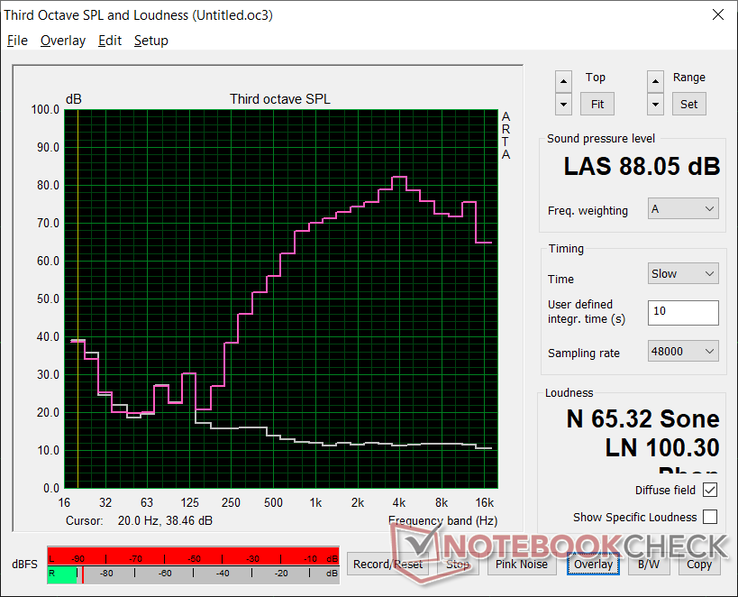
Infinix Hot 10S audio analysis
(+) | speakers can play relatively loud (88.1 dB)
Bass 100 - 315 Hz
(-) | nearly no bass - on average 39.3% lower than median
(±) | linearity of bass is average (13.5% delta to prev. frequency)
Mids 400 - 2000 Hz
(±) | reduced mids - on average 6.4% lower than median
(+) | mids are linear (6.1% delta to prev. frequency)
Highs 2 - 16 kHz
(±) | higher highs - on average 6.4% higher than median
(+) | highs are linear (4.5% delta to prev. frequency)
Overall 100 - 16.000 Hz
(±) | linearity of overall sound is average (25.1% difference to median)
Compared to same class
» 56% of all tested devices in this class were better, 8% similar, 37% worse
» The best had a delta of 12%, average was 38%, worst was 134%
Compared to all devices tested
» 73% of all tested devices were better, 6% similar, 21% worse
» The best had a delta of 4%, average was 25%, worst was 134%
Apple MacBook 12 (Early 2016) 1.1 GHz audio analysis
(+) | speakers can play relatively loud (83.6 dB)
Bass 100 - 315 Hz
(±) | reduced bass - on average 11.3% lower than median
(±) | linearity of bass is average (14.2% delta to prev. frequency)
Mids 400 - 2000 Hz
(+) | balanced mids - only 2.4% away from median
(+) | mids are linear (5.5% delta to prev. frequency)
Highs 2 - 16 kHz
(+) | balanced highs - only 2% away from median
(+) | highs are linear (4.5% delta to prev. frequency)
Overall 100 - 16.000 Hz
(+) | overall sound is linear (10.2% difference to median)
Compared to same class
» 5% of all tested devices in this class were better, 2% similar, 93% worse
» The best had a delta of 5%, average was 19%, worst was 53%
Compared to all devices tested
» 3% of all tested devices were better, 1% similar, 96% worse
» The best had a delta of 4%, average was 25%, worst was 134%
Energy Management
Power Consumption
| Infinix Hot 10S Helio G85, Mali-G52 MP2, 128 GB eMMC Flash, , 720x1640, 6.82 | Samsung Galaxy A52 5G SD 750G 5G, Adreno 619, 128 GB UFS 2.1 Flash, Super AMOLED, 2400x1080, 6.50 | Doogee X95 Pro Helio A20 MT6761D, PowerVR GE8300, 32 GB eMMC Flash, IPS, 1600x720, 6.52 | OnePlus 9 SD 888 5G, Adreno 660, 256 GB UFS 3.1 Flash, AMOLED, 2400x1080, 6.55 | Motorola Moto G30 SD 662, Adreno 610, 128 GB eMMC Flash, LCD IPS, 1600x720, 6.50 | Apple iPhone 12 Pro Max A14, A14 Bionic GPU, 128 GB NVMe, OLED, 2778x1284, 6.70 | |
|---|---|---|---|---|---|---|
| Power Consumption | 33% | 38% | 7% | 21% | 41% | |
| Idle Minimum * | 1.7 | 0.92 46% | 0.5 71% | 0.9 47% | 0.8 53% | 0.8 53% |
| Idle Average * | 2.9 | 1.78 39% | 2 31% | 1.7 41% | 1.5 48% | 1.5 48% |
| Idle Maximum * | 3 | 1.81 40% | 2.7 10% | 2.7 10% | 1.8 40% | 1.9 37% |
| Load Average * | 5.3 | 3.86 27% | 3.7 30% | 5.4 -2% | 6.1 -15% | 3.4 36% |
| Load Maximum * | 7 | 6.14 12% | 3.8 46% | 11.1 -59% | 8.4 -20% | 4.7 33% |
* ... smaller is better
Battery Life
Runtimes are long at over 12 hours of real-world WLAN use thanks to the large 5000 mAh battery. Charging is also decently fast from 15 percent to 73 percent in 90 minutes with the included AC adapter.
| Infinix Hot 10S Helio G85, Mali-G52 MP2, Wh | Samsung Galaxy A52 5G SD 750G 5G, Adreno 619, Wh | Doogee X95 Pro Helio A20 MT6761D, PowerVR GE8300, Wh | Realme 8 Pro SD 720G, Adreno 618, Wh | OnePlus 9 SD 888 5G, Adreno 660, Wh | Motorola Moto G30 SD 662, Adreno 610, Wh | |
|---|---|---|---|---|---|---|
| Battery Runtime | -42% | -29% | -18% | -31% | -13% | |
| WiFi v1.3 | 1230 | 710 -42% | 879 -29% | 1006 -18% | 854 -31% | 1069 -13% |
| Reader / Idle | 1917 | 1623 | 2336 | |||
| Load | 324 | 168 | 219 |
Pros
Cons
Verdict
The Hot 10S is one of the better smartphones in its super-cheap price range. Many of its disadvantages, including the noticeable ghosting, unremarkable native resolution, and heavy bloatware, are easy to live with for those who just want a large smartphone with an equally large display. The decent Helio G85 SoC and 90 Hz refresh rate help to make the smartphone feel faster than it really is when compared to others in its category for browsing and the occasional light gaming.
Cheap, long-lasting, and big for users who want to maximize value per dollar. However, you're likely going to uninstall all the distracting bloatware as soon as you can.
Price and availability
The Hot 10S and Hot 10S NFC will become widely available starting on May 14 in select regions.
Infinix Hot 10S
-
04/28/2021 v7
Allen Ngo


 Deutsch
Deutsch English
English Español
Español Français
Français Italiano
Italiano Nederlands
Nederlands Polski
Polski Português
Português Русский
Русский Türkçe
Türkçe Svenska
Svenska Chinese
Chinese Magyar
Magyar